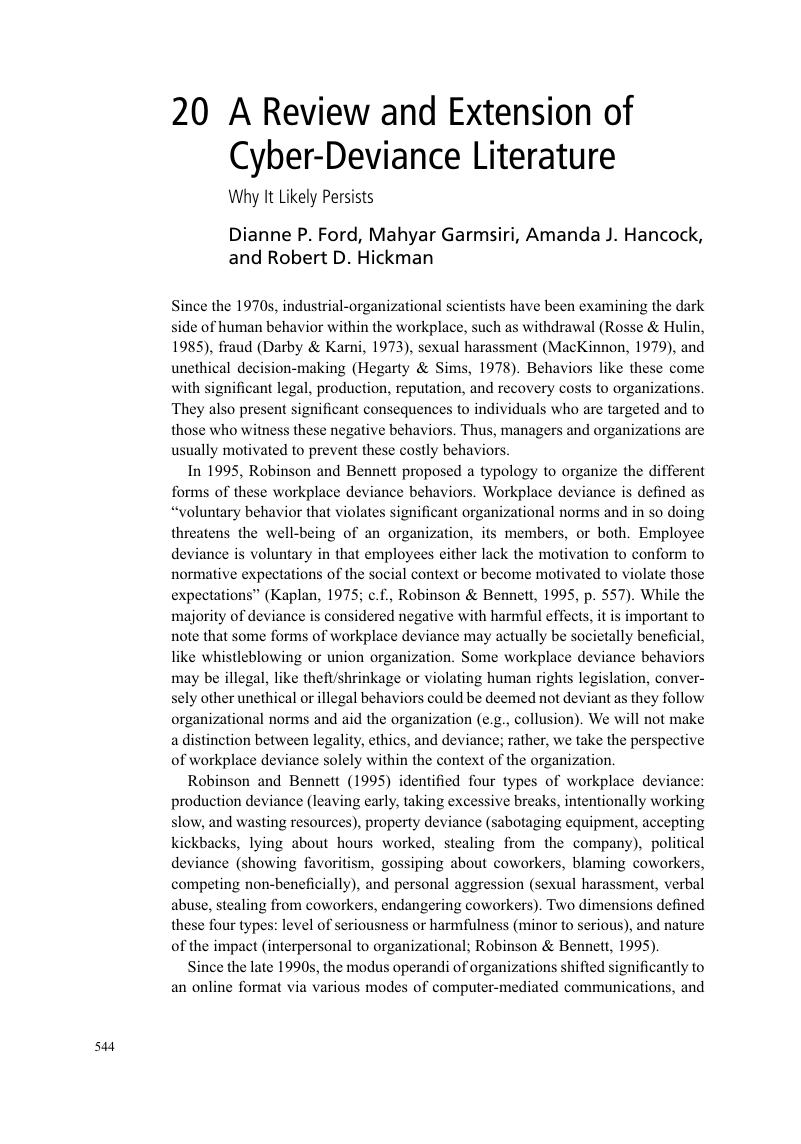Book contents
- The Cambridge Handbook of Technology and Employee Behavior
- The Cambridge Handbook of Technology and Employee Behavior
- Copyright page
- Dedication
- Contents
- Notes on Contributors
- Preface
- Acknowledgments
- Part I Technology in I-O Psychology
- Part II Technology in Staffing
- Part III Technology in Training and Development
- Part IV Technology in Leadership and Teams
- Part V Technology in Motivation and Performance
- 19 Telework
- 20 A Review and Extension of Cyber-Deviance Literature
- 21 Information Communication Technology and Employee Well-Being
- 22 Technology and the Aging Worker
- 23 The Role of Technology in the Work-Family Interface
- 24 Work in the Developing World
- 25 Electronic Surveillance and Privacy
- Part VI Technology in Statistics and Research Methods
- Part VII Interdisciplinary Perspectives on Employees and Technology
- Index
- References
20 - A Review and Extension of Cyber-Deviance Literature
Why It Likely Persists
from Part V - Technology in Motivation and Performance
Published online by Cambridge University Press: 18 February 2019
- The Cambridge Handbook of Technology and Employee Behavior
- The Cambridge Handbook of Technology and Employee Behavior
- Copyright page
- Dedication
- Contents
- Notes on Contributors
- Preface
- Acknowledgments
- Part I Technology in I-O Psychology
- Part II Technology in Staffing
- Part III Technology in Training and Development
- Part IV Technology in Leadership and Teams
- Part V Technology in Motivation and Performance
- 19 Telework
- 20 A Review and Extension of Cyber-Deviance Literature
- 21 Information Communication Technology and Employee Well-Being
- 22 Technology and the Aging Worker
- 23 The Role of Technology in the Work-Family Interface
- 24 Work in the Developing World
- 25 Electronic Surveillance and Privacy
- Part VI Technology in Statistics and Research Methods
- Part VII Interdisciplinary Perspectives on Employees and Technology
- Index
- References
Summary

- Type
- Chapter
- Information
- The Cambridge Handbook of Technology and Employee Behavior , pp. 544 - 579Publisher: Cambridge University PressPrint publication year: 2019
References
- 1
- Cited by

